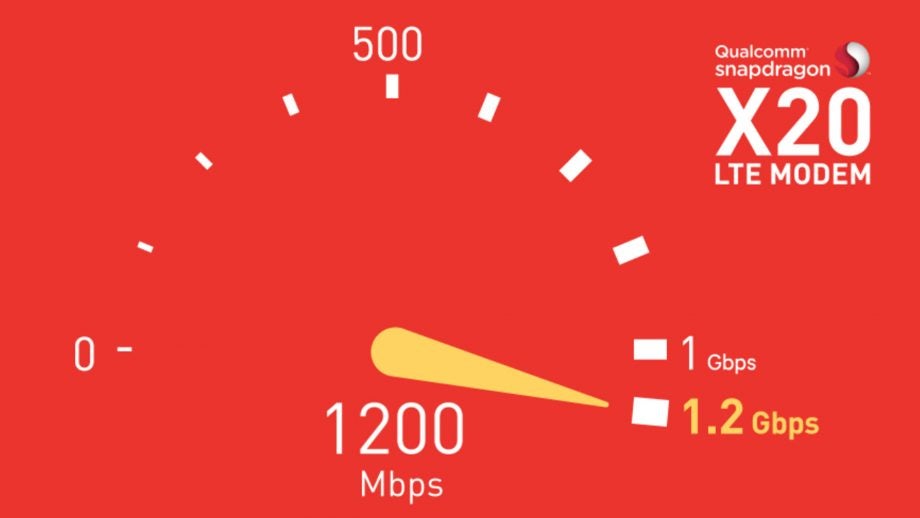What is Gigabit LTE? Blistering 1Gbps+ 4G speeds on iPhone XS explained

Gigabit LTE is an important stepping stone to 5G mobile data connectivity. It features a number of building blocks for the new network infrastructure and is already available on some smartphones and mobile networks. The brand new iPhone XS and XS Max are among the phones supporting Gigabit class LTE, so let’s dive in…
A the time of writing there are no 5G mobile phones and no 5G mobile networks up and running. The expectation is that will change very soon. However, even then it’s going to take time for the infrastructure to build out and it’ll be years before a good spread of coverage and higher-end speeds are realised.
However, what if we told you there’s a way to realise lofty Gigabit speeds (1000Mbps) on your existing phones, on the existing LTE networks? You’d probably ask why isn’t Gigbait LTE getting the same attention as the looming 5G overlord, right?
Related: What is 5G?
How fast is Gigabit LTE?
In testing, the chipmaker Qualcomm has worked with networks to hit speeds of almost 1.2Gbps on existing devices, thanks to the current flagship X20 modem, paired with the Snapdragon 845 processor on 2018 flagships. The next-generation Qualcomm Snapdragon X24 modem, likely to sit in phones like the Galaxy S10, can reach speeds of up to 2Gbps, and is designed for 5G networks.
[videoai]However, this doesn’t mean we’ll be seeing those speeds while walking around the town centre on a Saturday afternoon. In the real world, speeds will tend to max out at around 400Mbps for consumers with eligible phones on eligible networks.
However, considering the UK’s best performing 4G network EE averages 4G LTE speeds of 26Mbps around the nation, this is a welcome advance right?
Which devices can access Gigabit LTE?
The Qualcomm Snapdragon X16 LTE modem was the first to put together the pieces for Gigabit LTE on the device side, offering theoretical max speeds of 1Gbps via Category 16 LTE. It was joined in late 2017 by the X20 Modem, which offers category 18 LTE that maxes out at 1.2Gbps.
Phones with the X16 LTE modem: Samsung Galaxy Note 8, Samsung Galaxy S8/Plus/Active, LG V20, LG V30, HTC U11, Moto Z Force (2ndGen), Google Pixel 2 & XL, OnePlus 6. Essential Phone, X16 equipped versions of the iPhone X (albeit with 4×4 MIMO capabilities disabled so not truly Gigabit equipped).
Phones with X20 LTE modem: Samsung Galaxy S9/Plus, Samsung Galaxy Note 9, LQ G7 ThinQ, HTC U12+, Sony Xperia XZ3.
Intel is also looking to muscle in on the action with its Gigabit-enabled 7560 and 7660 LTE modems. One or both of those are rumoured to be displacing Qualcomm modems within the 2018 iPhone Xs, iPhone Xs Max. We know these models support Gigabit LTE but are awaiting confirmation on which modems are in use.
How does Gigabit LTE work?
If the modems in currently available phones, and mobile networks can use the LTE spectrum and infrastructure, then why aren’t we seeing these speeds everywhere already? Well a number of emerging technologies, that’ll also play a roll in the journey towards 5G, are currently making their way to networks and devices.
Firstly there’s a special sauce involved called Carrier Aggregation. This enables your mobile network to use multiple frequencies to send data from its cell tower to your LTE-enabled smartphone. This widens the number of lanes in the road, so to speak, allowing you to pick up more speed.
Likewise, a tech called 256-QAM (Quadrature Amplitude Modulation) essentially enables more data to your phone from the cell tower at a single time, relieving congestion on the network and enabling up to 33% faster data connection speeds.
Qualcomm explains the tech with a highway analogy. If all trucks are carrying the same load (6 bits per signal, in the current instance), you can speed up traffic by reducing the number of trucks by adding a greater load to each (8 bits with Gigabit LTE.) This will improve network speeds for everyone.
Gigabit LTE also makes use of a tech called 4X4 MIMO (Multiple Input, Multiple Output), which is all about improving the efficiency of the network. While carrier aggregation only enables the data lanes to be widened so much, 4X4 MIMO works by stacking new lanes on top. This tech also doubles the antennas on each LTE enabled device, giving your phone a greater opportunity to lock on to the strongest, fastest signal.
Finally, Gigabit LTE makes use of both licensed assisted access (LAA) and unlicensed (LTE-U) spectrum in order to boost the network capacity in high traffic areas. Have you ever come out of a football stadium or concert venue and tried to WhatsApp a friend to meet up? The deployment of Unlicensed spectrum hopes to clean up this overloading problem.
When can I access Gigabit LTE speeds on my phone?
Gigabit LTE will be a welcome stopgap on the road to full-fat 5G. The UK’s most popular 4G network EE began the roll out of its Gigabit LTE network with a demonstration at Wembley Stadium last year. We’ve contacted the company to see exactly how far it is along.
Vodafone is rolling the tech out in Germany, but seemingly not in the UK yet. Likewise, Brits on O2 and Three can’t access the Gigabit LTE speeds either.
All four of the major US networks (Verizon, Sprint, AT&T and T-Mobile) say they’re using 4x4MIMO and 3-way carrier aggregation to build towards Gigabit LTE speeds.
Are you patiently awaiting the arrival fo 5G? Or will Gigabit LTE tide you over for now? Drop us a line @TrustedReviews on Twitter.


